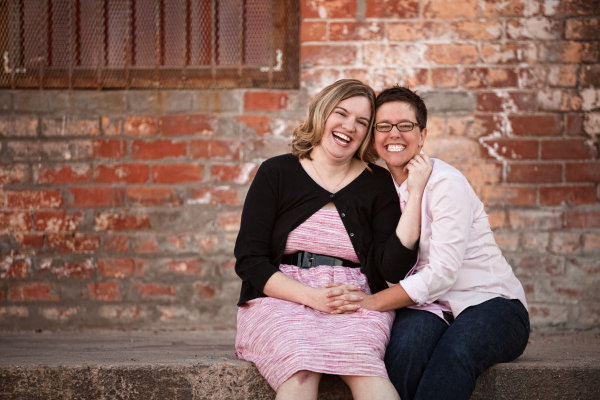Bankruptcy
About Bankruptcy Alternatives
Managing debt can feel overwhelming, but you don’t have to tackle it alone. Whether you’re struggling with mounting bills or simply looking for the best debt relief options, understanding the options available to you is the first step toward reclaiming your financial freedom. From consumer proposals to bankruptcy and all bankruptcy alternatives, we will walk you through the key options for Toronto debt relief and provide insights into choosing the right path for your circumstances.
You’ll learn how a Licensed Insolvency Trustee near me can offer insight and guidance, what makes consumer proposals such a powerful tool to regain control over debt, and how they compare to other solutions like bankruptcy or debt management programs.

Finding the Right Company
Choosing the right licensed insolvency trustee near me is a critical step in regaining control of your finances—and we’re here to make that process as smooth and empowering as possible. Our deeply personalized and respectful approach to toronto debt relief sets us apart. We don’t just process bankruptcies and consumer proposals; we guide you through every step with empathy, clarity, and a genuine commitment to your long-term financial well-being.
Our service is shaped by honest feedback from clients and partners, ensuring that our support isn’t just professional—it’s human. We take the time to understand your unique situation, present your options in plain language, and deliver solutions that align with your personal and financial goals. Whether you’re considering bankruptcy alternatives or looking into a debt management program vs consumer proposal, we help you confidently make informed decisions.
Is a Bankruptcy Right for You?
Deciding between a consumer proposal vs bankruptcy ontario and other debt management options can be challenging. Your choice will depend on factors like your income, assets, and overall financial goals. If you’re considering a consumer proposal, consulting with a licensed insolvency trustee is the best starting point. We are a federally regulated professional; our insight, experience, and expertise can help you build a path toward financial stability.

The FAQ Section
When someone faces overwhelming debt that they can no longer manage, bankruptcy can provide a legal way to eliminate their debt and start fresh. While this process will relieve financial stress, understanding how it works, and exploring alternatives, is crucial before making any decisions.
This guidance will break down the key aspects of bankruptcy, explore the difference between bankruptcy and consumer proposal, and discuss how filing for bankruptcy might impact your financial future. If you’re searching for answers, you’re not alone—there’s help available.
Understanding Bankruptcy in Canada
Bankruptcy is a legal process regulated by Canada’s Bankruptcy and Insolvency Act (BIA). It is designed to give individuals or businesses in financial distress a chance to start over. Filing for bankruptcy allows you to eliminate most unsecured debts, like credit card balances, payday loans, or unpaid utility bills.
However, bankruptcy isn’t without consequences. It can affect your credit score for several years and may require you to surrender certain assets to repay creditors. But for many, it is the step toward achieving stability after years of financial hardship.
Any individual who is insolvent—that is, unable to repay their debts as they become due—may qualify for bankruptcy in Canada. To file, you must owe at least $1,000 and meet with a licensed insolvency trustee near me or in your area. These professionals are trained and legally authorized to guide you through the bankruptcy process while ensuring you understand the implications.
For example, in major urban areas looking for solutions like Toronto debt relief, a licensed insolvency trustee can help create a detailed assessment of your finances and explain your options.
Filing for bankruptcy begins with a free assessment by consulting with a licensed insolvency trustee near me. Here’s how the process typically unfolds:
Initial Consultation
During this meeting, the trustee will review your financial situation and confirm whether you’re eligible for bankruptcy. They may also explore bankruptcy alternatives, depending on your circumstances.
Documentation
If bankruptcy is the right choice, you’ll sign legal documents to make the assignment is bankruptcy. The LIT will be responsible to verify your statement of affairs and will require documents, such as RSP statements, life insurance policies, vehicle ownership, pay stubs, etc. in order to do so.
Creditor Contact Ceases
Once the process begins, a stay of proceedings is immediately put in place and creditors are legally prohibited from contacting you. This means no further harassing calls, threats or wage garnishments—immediate help with debt stress.
Repayments and Education
Based on your income, the trustee may require you to make surplus income payments during bankruptcy. You’ll also need to attend financial counseling sessions to prepare for life post-bankruptcy.
Discharge
Once your obligations and duties are met, you’ll be discharged from bankruptcy, typically within 9 to 21 months for first-timers.
While bankruptcy is a solution for deeply unmanageable debt, it’s not the only option. Many individuals find that exploring bankruptcy alternatives can provide relief without the long-term impact on their credit score. Below are some common options:
1. Consumer Proposal
A consumer proposal is a legal option that allows you to repay a portion of your debt, interest-free, over a period of up to five years. Unlike bankruptcy, you get to retain your assets. Many people searching for consumer proposal vs bankruptcy Ontario feel empowered when they learn that this alternative avoids the harsher credit implications of bankruptcy and allows you to start reestablishing your credit score sooner.
2. Debt Management Programs
If you need structured guidance on paying off debts, a debt management program vs consumer proposal may feel like the best route. These programs, offered by credit counseling agencies, consolidate debts into a single monthly payment. However, they differ in that they don’t reduce the amount you owe and only freeze the interest on the debts that agree to participate.
3. Debt Consolidation Loans
If you’re managing multiple high-interest debts, consolidating them into one lower-interest loan can reduce your financial burden.
By comparing consumer proposals, debt management program vs consumer proposal benefits, and other routes, you can identify the best debt relief solution for your unique situation with professional guidance.
Both a consumer proposal and bankruptcy are effective debt relief options in Canada, but the differences between the two can be significant.
Key Differences:
Assets
Consumer Proposal: Allows you to retain most, if not all, personal assets like your home or investments like and RRSP or TFSA.
Bankruptcy: Requires surrender of non-exempt assets to pay creditors.
Monthly Payments
Consumer Proposal: Consistent, structured payments over up to five years.
Bankruptcy: Payments vary based on your income level throughout the bankruptcy process.
Length of Process
Consumer Proposal: Typically completed within five years or less.
Bankruptcy: Discharge can take as little as nine months for an individual who has not been bankrupt before and has low income.
Credit Impact
Consumer Proposal: Recorded as an R9 on your credit report until completed and then R7 for 3 more years, showing the debt as settled.
Debt Management Program: Recorded as an R9 on your credit report until completed and then R7 for 2 more years, showing the debt as settled.
Bankruptcy: Assigned an R9 rating and remains for six years after discharge.
For those balancing the difference between bankruptcy and consumer proposal, the latter is ideal for individuals wanting to resolve debts without losing their wealth-building assets.
Bankruptcy isn’t the only option when seeking help with debt. Exploring bankruptcy alternatives, like a consumer proposal, may be a better path for people who:
Have sufficient income to make smaller monthly payments.
Wish to avoid surrendering personal assets.
Want legal protection from creditors without filing for bankruptcy.
These options can alleviate financial strain while preserving your financial stability.
If you’re unsure which route to take, connecting with a Licensed Insolvency Trustee near me, like The Oakman Group Inc. is the best first step. They’ll explain your options and guide you toward the solution that best suits your financial profile.
Deciding between a consumer proposal vs bankruptcy Ontario, or even considering a DMP, depends on your unique circumstances. Here are some pointers to guide your decision-making process.
- Choose Bankruptcy If:
You have no disposable income and cannot manage monthly payments.
You’re facing severe creditor actions (e.g., wage garnishment).
You want full debt forgiveness (with some exceptions like secured debts). - Opt for a Consumer Proposal If:
You have stable income and want a structured, legally binding way to eliminate a portion of your debt.
You also want protection from creditor actions during the proposal period. - Consider a Debt Management Program If:
Your primary issue is high interest rates, and you can otherwise manage minimum payments.
You don’t want to go through a legal process like a proposal or bankruptcy.
Exploring your options with a licensed insolvency trustee near me can help you determine the best course of action. Trustees are qualified professionals who specialize in debt relief solutions and can tailor a plan to meet your needs.
What Our Clients Say

Apart from the obvious services you provide, you have all been so respectful, gracious, patient and caring, making an unimaginable situation much more bearable. I learned a tremendous amount. I will always be grateful for the important skills you shared and for the compassion with which you treated me. I look to the future with much more optimism because of you. – Fiona

I can’t express how grateful I am for everything you’ve done. I really felt like I had people looking out for my best interest. You have gone above and beyond. You are all caring and kind. – Shennel

I can’t thank you enough for all you have done for me. I really appreciate all your help, knowledge and the respect you showed me and for giving me my dignity as a person back. – Linda
Contact Us
If you would like to ask us a question, please complete the quick form below.





